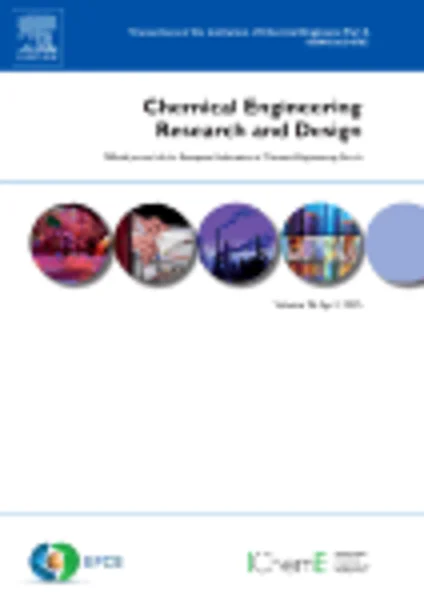-
computational study of the flow characteristics and separation efficiency in a mini-hydrocyclone
جزئیات بیشتر مقاله- تاریخ ارائه: 1392/07/24
- تاریخ انتشار در تی پی بین: 1392/07/24
- تعداد بازدید: 566
- تعداد پرسش و پاسخ ها: 0
- شماره تماس دبیرخانه رویداد: -
the development of a simple and feasible fluid–solid separation device is critical to further advancement in the use of micro-technology. the mini-hydrocyclone, which possesses a concise geometry and simple operational process, has been proposed as a promising solution to bridge this gap since the cut-size decreases with decreasing hydrocyclone diameter. in this work, we investigated the fluid flow and particle separation ability of a 5 mm diameter mini-hydrocyclone through computational fluid dynamics (cfd) modelling. direct numerical simulation (dns) results with cfd have shown that the flow transition and subsequent unsteady state behaviour occurred in the mini-hydrocyclone at a low reynolds number (rein = 300) because of the onset of centrifugal instability. the centrifugal instability offered an insight into the flow transition and the development of turbulent flow in hydrocyclones which have not been studied. the centrifugal instability in the mini-hydrocyclone begins as görtler vortices developing in the boundary layer and they subsequently affect the flow field. particle motion tracing showed that improved separation with finer cut size, d50, and steeper separation sharpness were obtained as the inlet velocity was increased. the improvement can be explained by the flow characteristics when the flow transits to turbulent flow.
مقالات جدیدترین رویدادها
-
استفاده از تحلیل اهمیت-عملکرد در ارائه الگوی مدیریت خلاقیت سازمانی و ارائه راهکار جهت بهبود
-
بررسی تاثیر ارزش وجوه نقد مازاد بر ساختار سرمایه شرکت های پذیرفته شده در بورس اوراق بهادار تهران
-
بررسی تأثیر سطح افشای ریسک بر قرارداد بدهی شرکت های پذیرفته شده در بورس اوراق بهادار تهران
-
بررسی تأثیر رتبه بندی اعتباری مبتنی بر مدل امتیاز بازار نوظهور بر نقد شوندگی سهام با تأکید بر خصوصی سازی شرکت ها
-
تأثیر آمیخته بازاریابی پوشاک ایرانی بر تصویر ذهنی مشتری پوشاک ایرانی (هاکوپیان)
-
مطالعه عددی مدل های آشفتگی و میدان جریان در کانال های انحرافی
-
احیای هنرهای سنتی ایران در معماری داخلی
-
خشکسالی و تاثیر آن بر روند تغییرات تراز آب زیرزمینی دشت اردبیل در دو دهه اخیر
-
مقایسه اثر ایزوفلوران و سووفلوران بر لرز پس از بیهوشی عمومی
-
ionic liquids as novel catalysts for methane conversion under a dc discharge plasma
مقالات جدیدترین ژورنال ها
-
مدیریت و بررسی افسردگی دانش آموزان دختر مقطع متوسطه دوم در دروان کرونا در شهرستان دزفول
-
مدیریت و بررسی خرد سیاسی در اندیشه ی فردوسی در ادب ایران
-
واکاوی و مدیریت توصیفی قلمدان(جاکلیدی)ضریح در موزه آستان قدس رضوی
-
بررسی تاثیر خلاقیت، دانش و انگیزه کارکنان بر پیشنهادات نوآورانه کارکنان ( مورد مطالعه: هتل های 3 و 4 ستاره استان کرمان)
-
بررسی تاثیر کیفیت سیستم های اطلاعاتی بر تصمیم گیری موفق در شرکتهای تولیدی استان اصفهان (مورد مطالعه: مدیران شرکتهای تولیدی استان اصفهان)
-
تجلی رستاخیز در پنج گنج نظامی
-
مکاتب فکری حاکم بر آموزش در ایران معاصر و تأثیر آن بر خلاقیت
-
ازدواج سفید و پیامد های آن در کشور ایران
-
breast cancer, a systematic review of epidemiology, diagnosis, surgical treatments, radiotherapy and chemotherapy
-
effects of fiber volume fraction and aspect ratio on mechanical properties of hybrid steel fiber reinforced concrete




سوال خود را در مورد این مقاله مطرح نمایید :